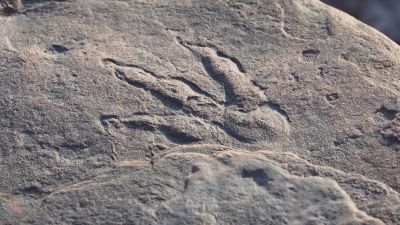Dinosaur footprint beach near Barry damaged after people use 'sledgehammers and crow bars' to try and remove rocks

Natural Resources Wales received reports over the weekend of people using sledgehammers and crow bars to try and remove rocks on the beach where a dinosaur print was found.
It says around 50 people attended the beach near Barry, with the majority of those visiting leaving no trace of their visit.
But the site was left damaged after reports people came to the beach with sledgehammers and crow bars in an attempt to remove some of the rocks.
Natural Resources Wales said: "We’ve been made aware of a number of reports of anti-social behaviour this weekend, following the news of a new dinosaur footprint being discovered at a beach in south Wales.
"Around 50 people attended the site near Barry – and although the majority of visitors left no trace of their visit, we’ve unfortunately received reports of several people trying to remove rocks with sledgehammers and crow bars leading to several areas of the site being damaged.
"The site where the fossil was discovered is a Site of Special Scientific Interest (SSSI) which contains geological features that require careful site management in order to protect and preserve them
"SSSI are protected under the Wildlife and Countryside Act and it is illegal to remove, damage or destroy rocks from this site without permission. This can lead to fines of up to £20,000."
Four-year-old Lilly Walker discovered a dinosaur footprint, preserved in rock on the beach near Barry.
The 220-million-year-old print was found when she was out for a walk with her family.
Lily was the first to spot the footprint on a loose block near the sea at Bendricks Bay, which is a well-known beach for its dinosaur footprints.
The print has been described by the National Museum of Wales' Palaeontology curator as "the best specimen ever found on this beach".
The fossil has been extracted from the rock and has been taken to National Museum Cardiff where it can be studied and preserved.